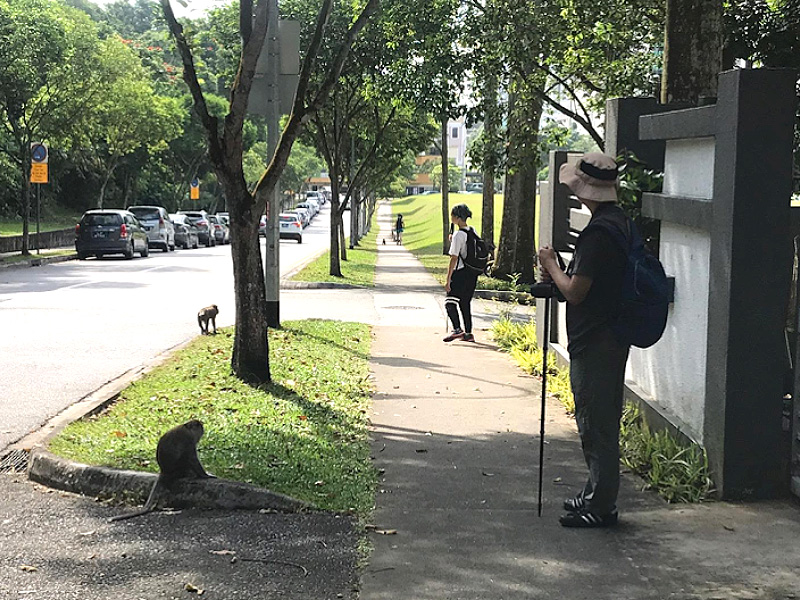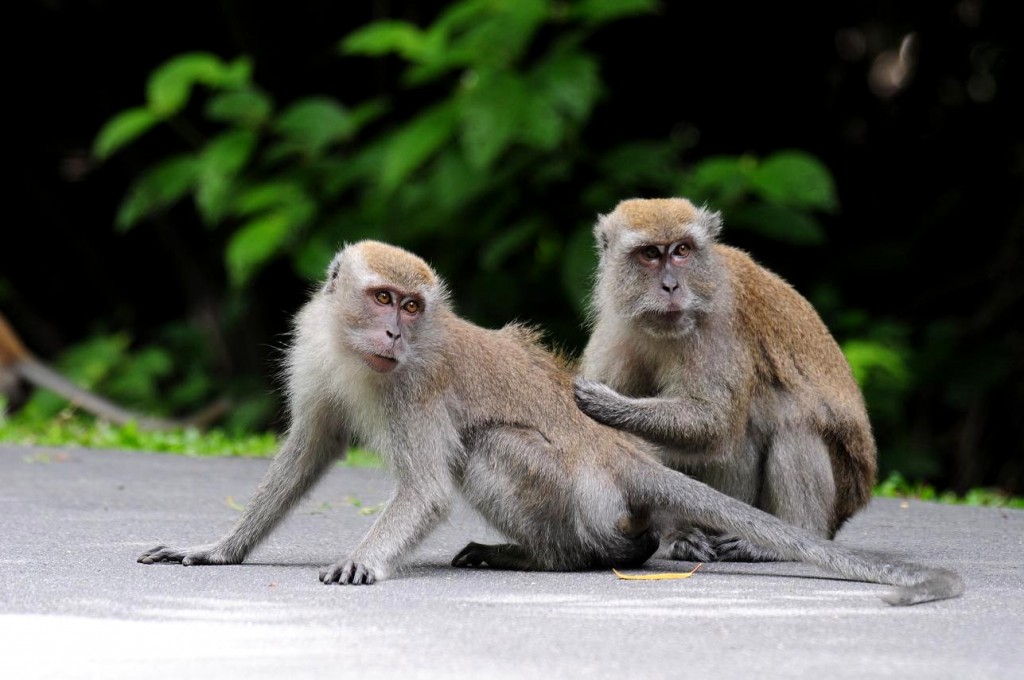Follow us on Telegram for the latest updates: https://t.me/mothershipsg
The long-tailed macaques in Singapore caused quite a ruckus in the past weeks.
While calls for culling might be one extreme reaction to such incidents, there might be a reason to put a pause to that thought.
The long-tailed macaque, or Macaca fascicularis, has been given an updated status of “Endangered” on the International Union for Conservation of Nature (IUCN) Red List, as of Mar. 7.
The IUCN Red List assesses the extinction risk of animals, fungi and plants based on a series of assessment criteria.
Each assessed species is then assigned one of seven categories in increasing order of extinction risk, from "Least Concern" to "Extinct".
The long-tailed macaque was previously categorised as “Vulnerable” in its 2021 assessment.
Declining population across the region
The macaques are found mainly throughout Southeast Asia and in Bangladesh.
However, across the long-tailed macaque’s known habitat areas, the IUCN reported that its population has declined by at least 40 per cent over the past 40 years, and will decline by at least 50 per cent within the next 40 years.
In Bangladesh, they are locally extinct, the report stated.
In Laos, the long-tailed macaque population has declined by 90 per cent since a study was published in 2011, leaving the species with an estimated 300 to 500 individuals in the wild throughout the country.
Intensifying threats to population size
The IUCN explained that the long-tailed macaque population faces several intensifying threats to its numbers.
One such threat is the increasing calls to cull the macaques as a reaction to negative human-macaque interactions.
For example, the IUCN report noted that 493,823 macaques were culled in Malaysia from 2011 to 2018.
Apart from culling, the macaques are also the most traded primate species, “heavily demanded for biomedical and toxicology research” primarily from the U.S., Japan, China, and the European Union.
This demand has intensified over the Covid-19 pandemic.
The species has also gained a reputation among some public and wildlife authorities as a "pest” that is “over-abundant” in numbers.
This misconception is often used to justify the culling of the macaques, the IUCN report stated.
"Such sentiment has given rise to the illusory perception that long-tailed macaques are continuously distributed and overabundant everywhere throughout their range, exonerating the unsustainable removal of large numbers of individuals from the population."
It also pointed out that as development continues to take place throughout Southeast Asia, undisturbed habitat for the macaques will continue to decrease, which inevitably leads to the increase in contact between macaque and human populations.
Additionally, the IUCN stated that there is a "general lack of protection of this species across their range, although there are laws in place to protect them in several habitat countries".
The report concluded that the long-tailed macaques are “possibly one of the most endangered primate species currently", and the threats the species faces could lead to "irreversible population loss".
Long-tailed macaques not endangered in Singapore
Despite the IUCN categorisation, long-tailed macaques are not locally endangered.
Singapore is also the only country in the Southeast Asia region that has a national-level programme to track the local long-tailed macaque population, the IUCN report noted.
According to Singapore’s Red Data Book, the national publication which tracks the conservation status of local flora and fauna, the long-tailed macaques are of “least concern”.
However, with the re-categorisation, the IUCN hopes to "recognise the ecological and cultural roles (long-tailed macaques) play and change our narrative regarding the species".
In response to macaque-human interactions and conflicts, NParks employs methods such as monkey-guarding to guide macaques away from housing estates and towards forested areas.
 Image via Sabrina Jabbar/Jane Goodall Institute
Image via Sabrina Jabbar/Jane Goodall Institute
You can volunteer to be a monkey guard too with the Jane Goodall Institute Singapore by signing up here.
Top image via NParks
If you like what you read, follow us on Facebook, Instagram, Twitter and Telegram to get the latest updates.

